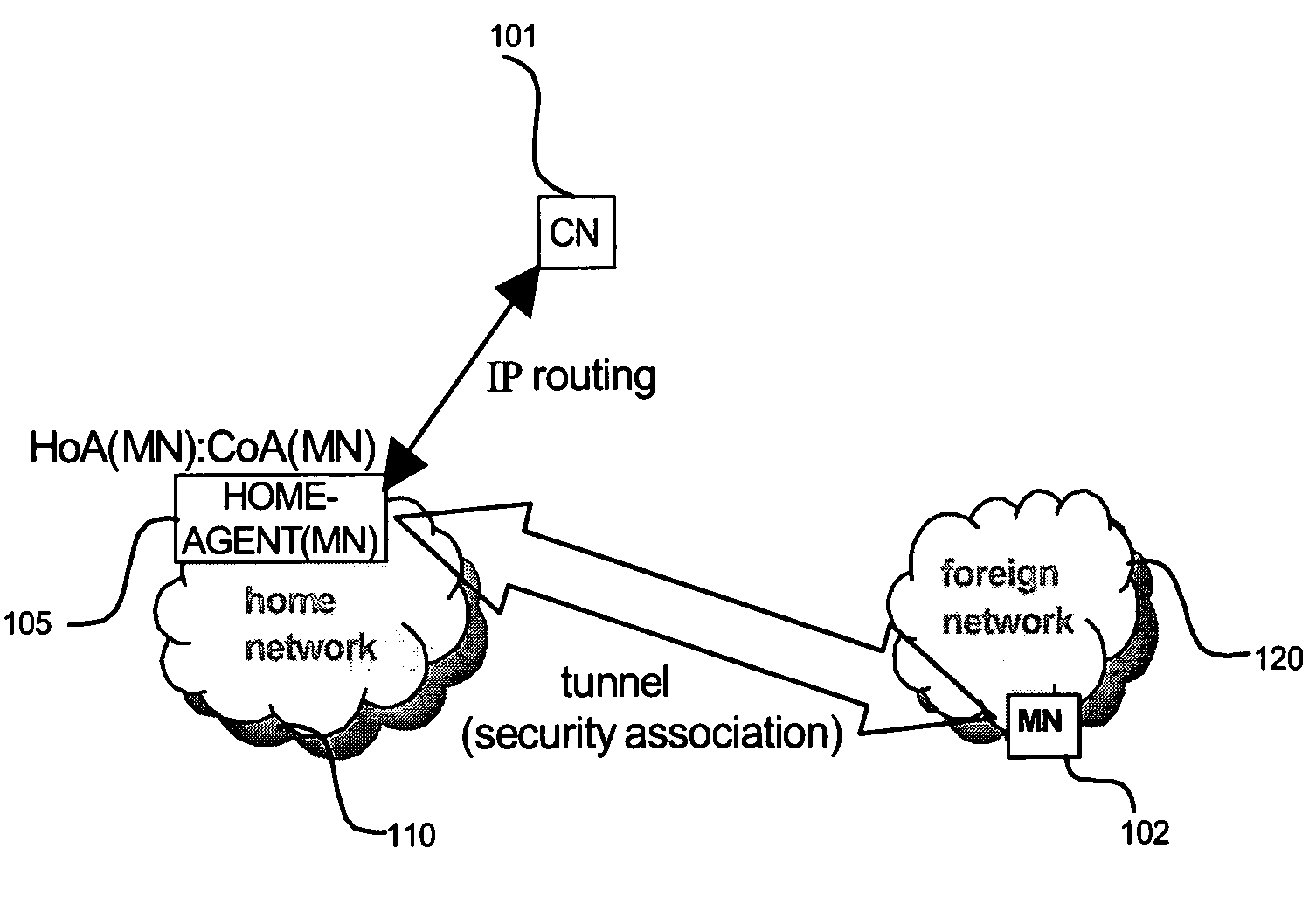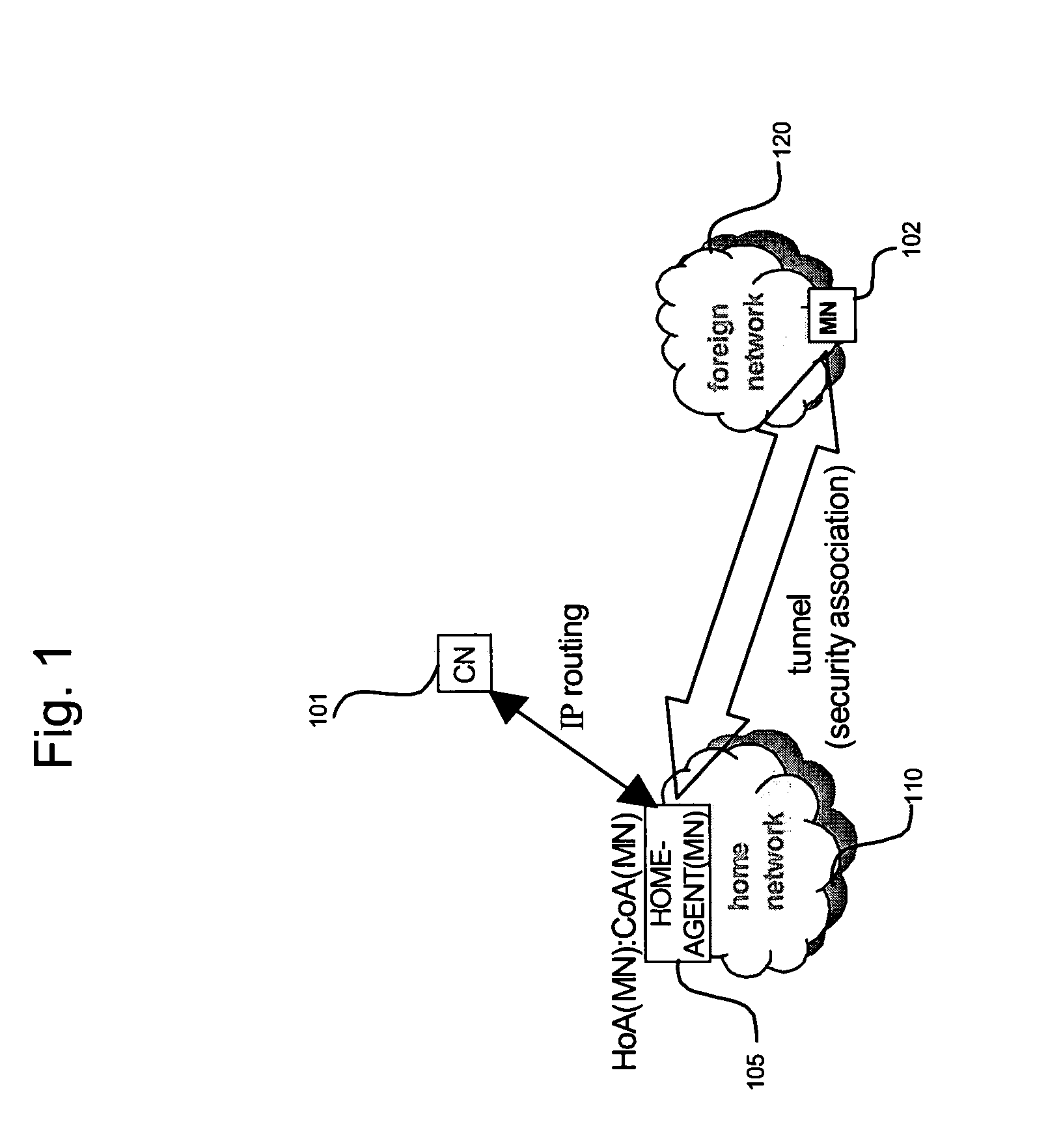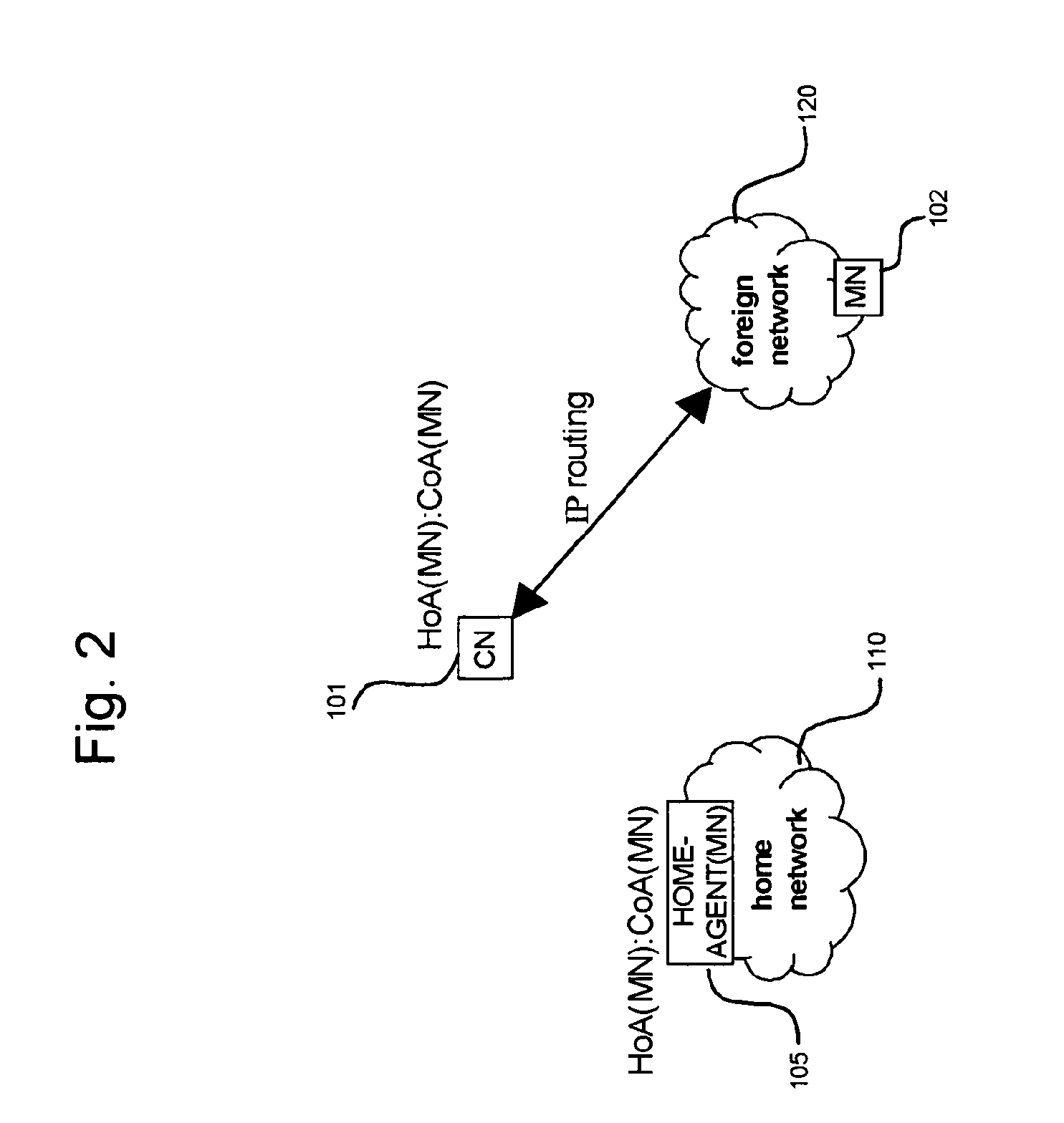Network controlled overhead reduction of data packets by route optimization procedure
a network control and data packet technology, applied in network traffic/resource management, wireless network protocols, wireless commuication services, etc., can solve the problems of limited data bandwidth capabilities and breakage of active ip sessions, reduce the header size of data packets, and reduce the overhead of exchanged ip packets
- Summary
- Abstract
- Description
- Claims
- Application Information
AI Technical Summary
Benefits of technology
Problems solved by technology
Method used
Image
Examples
Embodiment Construction
[0053]The following paragraphs will describe various embodiments of the invention. For exemplary purposes only, most of the embodiments are outlined in relation to a 3GPP-WLAN communication system according to the discussion in the Background Art section above and later on. It should be noted that the invention may be advantageously used for example in connection with a mobile communication system such as the 3GPP-WLAN communication system, but the invention is not limited to its use in this particular exemplary communication network.
[0054]The explanations given in the Technical Background section above are intended to better understand the mostly 3GPP specific exemplary embodiments described herein and should not be understood as limiting the invention to the described specific implementations of processes and functions in the mobile communication network. Nevertheless, the improvements proposed herein may be readily applied in the architectures / systems described in the Technologic...
PUM
 Login to View More
Login to View More Abstract
Description
Claims
Application Information
 Login to View More
Login to View More - R&D
- Intellectual Property
- Life Sciences
- Materials
- Tech Scout
- Unparalleled Data Quality
- Higher Quality Content
- 60% Fewer Hallucinations
Browse by: Latest US Patents, China's latest patents, Technical Efficacy Thesaurus, Application Domain, Technology Topic, Popular Technical Reports.
© 2025 PatSnap. All rights reserved.Legal|Privacy policy|Modern Slavery Act Transparency Statement|Sitemap|About US| Contact US: help@patsnap.com



